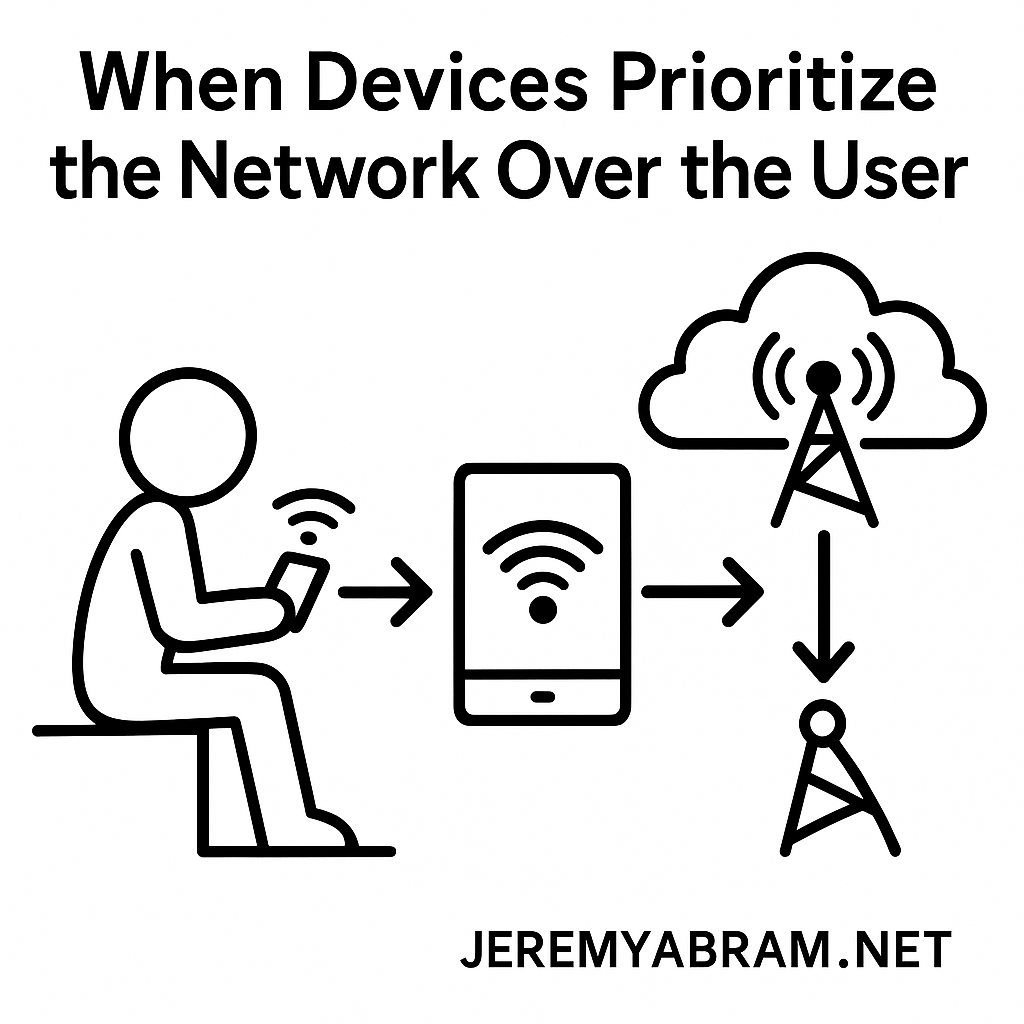
Edge computing, predictive syncing, & pre-cached ads — and the creeping shift in who technology serves
For decades, personal technology has been framed around empowerment. Your computer, your phone, your smart devices — tools designed to serve you. But as the modern computing landscape becomes increasingly interconnected and algorithm-directed, a subtle inversion is happening:
Devices are beginning to prioritize the network over the user.
And while this shift is often invisible, its implications are profound — touching autonomy, privacy, resource control, battery life, bandwidth, and ultimately, trust.
This article unpacks how three emerging forces — edge computing, predictive syncing, and pre-cached advertising — are reshaping the balance of power between humans and their devices.
The Age of Network-First Computing
Modern tech giants operate with a new mission: keep systems synchronized, trained, monetized, and always ready for the next interaction — whether or not the user has requested anything.
This is the foundation of network-first computing: a paradigm in which local devices act as extension limbs for the network, supporting:
- Machine learning inference & training
- Content distribution and ad delivery
- Real-time behavioral prediction
- Data harvesting and model improvement
- Background communication between apps & services
Your device is no longer idle when you’re idle.
It’s working — for someone else.
“Standby” has become “compute time.”
Edge Computing: Local Devices as Micro-Servers
Edge computing moves processing and decision-making out of cloud centers and into devices at the “edge” — phones, routers, smart cameras, cars, and wearables.
Benefits (the ones you hear about)
- Faster processing
- Reduced cloud load
- Better real-time performance (AR, AI, automation)
- Enhanced privacy for some tasks
The silent tradeoff
Edge devices don’t just work for you — they now also work for the network:
- Processing coordinated tasks for platforms
- Running inference for shared models
- Performing local computations at manufacturer request
- Serving as nodes in content and signal distribution
Your phone, car, thermostat, VR headset — they’re nodes in a distributed computing grid.
An unseen economy of micro-computation.
You bought the device.
But it serves two masters.
Predictive Syncing: Convenience or a Resource Tax?
Platforms increasingly pre-download and pre-sync data before you ask for it:
- Podcasts and videos auto-fetch episodes you may never watch
- Cloud albums sync photos you haven’t opened
- Messaging apps sync media before you click
- OS updates download silently, weeks in advance
- Games and apps pre-load content, assets, skins, daily rewards
Why companies do it
- Reduce load spikes
- Improve perceived performance
- Train prediction models
- Capture attention before competitors can
What it costs users
- Storage exhaustion
- Battery drain
- Bandwidth consumption
- Background CPU usage
- Decreased device lifespan
- More data extracted and behavior recorded
Predictive convenience is the Trojan horse of extractive orchestration.
You think it’s helping you prepare.
Often, it’s preparing for you — and not always to your benefit.
Pre-Cached Ads: The Digital Billboard That Loads Before You Look
The most aggressive form of network-first behavior?
Advertising delivered in advance.
Apps increasingly pre-load ads in the background so they can appear instantly when a user opens or scrolls.
Tactics include
- Pre-cached video ads
- Pre-fetched banners and tracking scripts
- Sponsored autoplay feeds
- Local ad storage refreshed hourly or daily
Impact
- Your device storage becomes an ad warehouse
- Your battery powers a marketing network
- Your bandwidth is spent on content you didn’t request
- Your attention is pre-contracted before you engage
Your phone is not idle; it’s a billboard on standby.
Who Does Your Device Work For?
This is the key question shaping the next decade:
Is your device serving you, or serving someone through you?
| You Think Your Device Is Doing | It May Actually Be Doing |
|---|---|
| Idling while charging | Running ML models or syncing ads |
| Saving battery | Downloading predictive content |
| Using data on your terms | Burning data for cloud-driven tasks |
| Handling private processing locally | Cooperating with network agendas |
The modern “idle device” is a myth.
Idle is now rented out.
From User Agency to Network Authority
We once controlled devices like tools.
Now devices push tasks onto us — updates, sync cycles, nudges, ad bursts, prompts, OS-level “optimizations.”
We are entering a world where:
- Attention is pre-allocated
- Device time is shared
- Resources are co-owned in practice, not principle
- Convenience becomes a vector for extraction
- Autonomy erodes through automated prioritization
Computing is drifting from:
User-centered → System-centered → Network-centered
And we are not the beneficiaries of every improvement.
How Users Can Regain Control
To maintain autonomy, users must become proactive stewards of their device ecosystems.
Practical safeguards
- Disable predictive app downloads / background app refresh
- Turn off OS-level “optimization” features that prioritize remote services
- Audit battery usage & background data
- Use OS privacy dashboards
- Block ads at device/network level
- Choose open platforms when possible
- Prefer offline-first and privacy-centric apps
- Keep “sync only on request” wherever possible
Emerging solutions
- User-sovereign edge computing
- Local-first AI & encrypted inference
- Federated control systems with user governance
- Ethical OS initiatives
- Permission-based background compute standards
Conclusion: Rebalancing the Digital Contract
We are entering an era where ownership and control diverge.
You own the device.
The network owns the behavior.
Unless we intervene, the default trajectory is clear:
Devices will increasingly serve the network first, and the user second.
Reclaiming agency will require awareness, new technical norms, and — eventually — regulation that treats personal computing resources like personal space, not commercial territory.
We must re-establish computing’s original contract:
Technology should work for people — not simply use people.
Leave a Reply